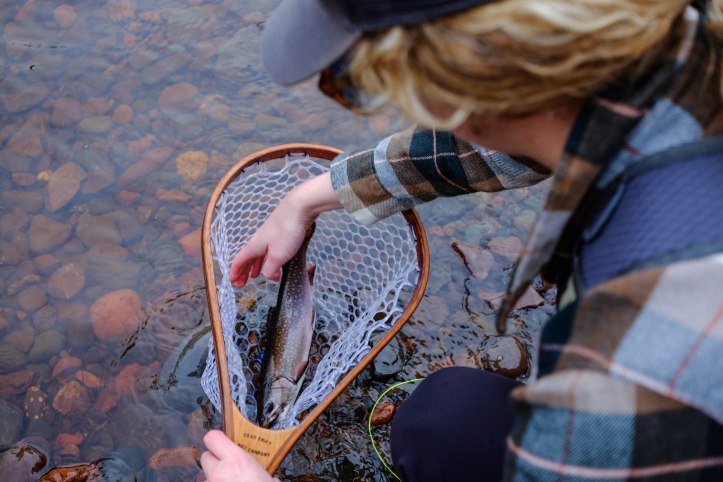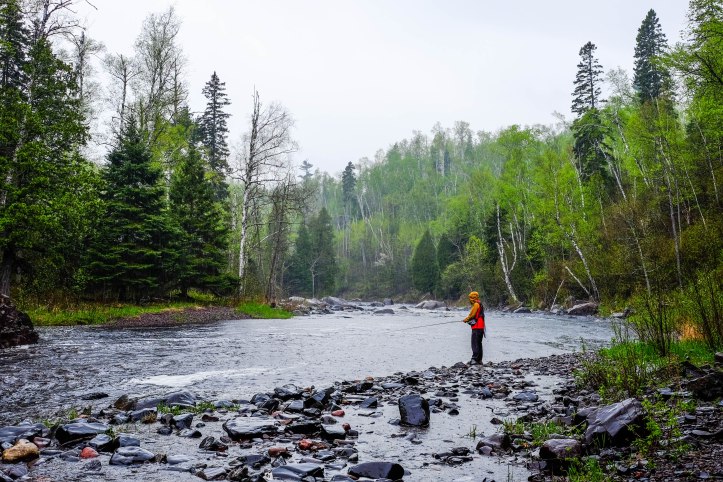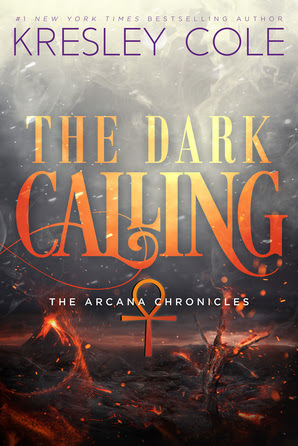I’ll start by letting you in on a secret. Minnesota doesn’t have 10,000 lakes. We’ve actually got 15,291. Something like 6% of the state is covered in water. Needless to say, lots of fishing is to be had. But instead of lakes, let’s talk about rivers and the exceptional trout fishing to be had.
Minnesota trout fishing is largely divided into two areas: North Shore and Driftless. The former refers to the region of the state north and east of Duluth. It was formed over a billion years ago with the Laurentian Shield and is some of the oldest exposed land on the planet. At the end of the last ice age, melting water from receding glaciers carved valleys and canyons into ancient volcanic rock, which are the rivers that flow into Lake Superior that we enjoy today.

Driftless on the other hand, is quite a bit younger. It’s an area comprised of southeast Minnesota, southwest Wisconsin, and northeast Iowa–towns like Red Wing, MN; La Crosse, WI; and Decorah and Davenport, IA. This region was untouched by glacial drift during the last ice age; hence the name Driftless. So when glaciers melted, rivers were carved into limestone, forming a crazy-beautiful bluff country that looks more like Appalachia than Minnesota.
The region that gets fished most often is Driftless because of its proximity to Minneapolis. The nearest fishable river is 20 minutes south of the cities, though most opt for more reliable fishing just across the river in Wisconsin. While brook trout are the only native salmonid to Driftless, almost every river has resident browns that were stocked decades ago, naturally reproduce, and some are regularly restocked. A few rivers are also stocked with rainbows, which also do quite well in the cold, fast water of Driftless. You’ll find some world-class fish here, too. It’s no secret that 21″-24″ browns have been pulled out of these rivers. Midge hatches start the year; followed by blue-winged olives and caddis in the spring; sulphurs, PMDs, and tricos fill the summer; then we get back into the BWOs and caddis to round out the year. Trout harvest seasons run April through October, while catch-and-release fishing has recently been added state by state and river by river, providing fishing all year.

North Shore fishing gets its popularity from steelhead fishing, which run in the spring and fall on South Shore rivers and in the spring only on the North Shore. Stocked salmon in Lake Superior also run in the fall and make for a fun catch if you can get up there early enough before they transform into zombies. The often-overlooked fish on the North Shore are the resident brook and rainbow trout because they aren’t as big as lake-run fish. It’s not unusual to hook a lake trout or splake (cross between lake and brook trout) on rivers close to the lake. Inland trout regulations are to be followed above posted boundaries, while you can fish all year below barrier falls. The North Shore has similar hatches to Driftless, but you’ll want to bring along some bigger bugs for this part of the state.
Regardless of where you end up, be sure to bring along clothing and gear for all sorts of weather. Conditions on the river can change quickly. When it’s warm enough in the spring for short sleeves in the sun, the water that you’re standing in is still borderline frigid. And when you’re fishing in the summer, mosquitos get horrid enough for you to sweat through a flannel to avoid a body covered in bites. It’s also important to bring along something that’ll help you deal with the weather on the inside: beer and/or whiskey.

Minnesota is proof that trout don’t live in ugly places. North Shore and Driftless are two of the most stunning regions in the country and the fish are there to prove it. Grab some friends, hike through steep valleys and old-growth forests, make a day (or three) out it. Catching trout it seldom easy, but when you base your day on spending time outdoors, you’ll surely enjoy yourself.
Advertisements Share this:





